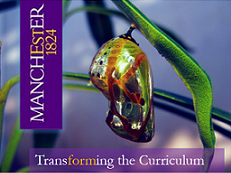From Garbage Classification To Sustainability In China
The context and integration of a focus on sustainability
The importance of garbage classification has not drawn enough attention from the public in China. Many students are not well aware of whether a certain kind of garbage is recyclable or not including me before coming to the UK. In the final presentation, I choose to design a geography class in primary school about garbage classification.

The class aims at imparting the knowledge that how to classify garbage and why to do it. To achieve the first goal, the relative knowledge is necessary, for example, what kind of garbage is recyclable and what is unrecyclable. To achieve the second aim: why we should do the garbage classification, here comes the integration part of the sustainability.
The second part would focus on the importance of the sustainability and how to realize it. Students would learn the concept of sustainability. To realize the goal of sustainability, efforts should be made, including changing the way of daily life to a more environmentally friendly and more caring way, caring for other species and nature.
The inspirations from the course and literature
Before taking the course, my understanding of sustainability was very vague and shallow: save energy and source so that next generation could survive. The first step for me in this class is to understand what is “sustainability” and why should we make effort to realize this goal. Susan’s video and Nolet’s book have been more than helpful to help me understand the concept (Nolet, 2016, pp. 3-7) and I strongly recommend them.
After having a deeper understanding of what is sustainability and why should we fight for this goal, I begin to question myself, how can we achieve such a big aim? In Nolet’s book, he put emphasis on the critical thinking about how our life could influence other people’s, other species’ and nature (Nolet, 2016 pp. 145-148). Then I recall the video made by a Ph.D. student of Susan and played at the first class, which records every small meaningful move to realize the sustainability.

The video inspires me a lot in the way that it tells me that if we could not change the world at once, we could change ourselves from the daily life from one small move like turn off the light when leaving the room and travel with public transportation. We also could classify the daily wastes into the right kinds and put them into the right waste containers, which is poorly done and put emphasis on in China. As a result, when I first came to the UK, I had to look for the information about garbage classification online, which left me a deep impression.
After changing ourselves, here comes the question that how can we change more and more people and let the critical thinking be rooted in their mind to achieve the sustainability finally? The answer is through education and education could be the strategy for achieving sustainability (Orr, 2004). We should integrate sustainability with the education to enable everyone with the ability to do the critical thinking and to live the life in an environmentally way.
Until then, I become very clear about the aim of my class and design. I would like to teach students the essential knowledge required to help them to change their lifestyle and integrate the knowledge with the idea of sustainability, hoping to root the idea and the critical thinking way in their mind.
From garbage classification to sustainability

After I have a clear goal, the next thing to decide is the context of my teaching. As what is mentioned above, the garbage classification is poorly done in China, which makes me interested in how to change the situation. Then Susan gives me two articles, which are more than helpful for me to understand more about the importance of waste recycling and the current situation in developing countries (Troschinetz and Mihelcic, 2009; Pike, et al., 2003).
Now, it strikes me that I could design a class to teach children how to classify the common waste in a geography class and have them think why we should classify the garbage and why we should recycle the recyclable ones.
Then I design a sports meeting involving the whole school approach and invite children’s parents to expand the influences. In the sports meeting, we would do fun events relating to the waste classification knowledge. In this way, we hope to let more people know about the garbage classification and change their lifestyle to pay more attention to classify their daily waste and put them in the right bin. In this way, education could become a strategy described above to help us to change increasingly more people and move increasingly closer to the sustainability.

After the class and the following sports meeting, I hope the idea ‘sustainability’ can be rooted in kids’ mind and change their thinking style and lifestyle, even if just a small step. When everyone moves a small step to change himself or herself, our world would make a big step toward the goal of sustainability.
References
Lisa Pike, Tim Shannon, Kay Lawrimore, April McGee, Martin Taylor, Gary Lamoreaux, (2003) ‘Science education and sustainability initiatives: A campus recycling case study shows the importance of opportunity’, International Journal of Sustainability in Higher Education, 4(3), pp.218-229.
Troschinetz, A. M., and Mihelcic, J. R. (2009). ‘Sustainable recycling of municipal solid waste in developing countries’, Waste Management, 29(2), pp. 915-923.
Nolet, V. (2015). Educating for sustainability: Principles and practices for teachers. Routledge.
Orr, D.W. (2004). Earth in mind: on education, environment, and the human prospect. Washington, DC: Earth Isla

